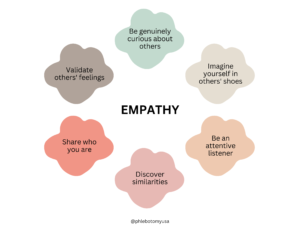16 Dec How to Become a Better Phlebotomist
Becoming a skilled and competent phlebotomist requires technical expertise and excellent patient interaction skills. Whether you are just starting or enhancing your skills, this article will provide helpful tips to help you become a better phlebotomist.
Understanding the Role of a Phlebotomist
Being a phlebotomist is a crucial role in the medical field. A high level of skill and precision are needed to perform the duties in this line of work. Phlebotomists play a vital role in the healthcare system by collecting blood samples from patients for various medical purposes.
Key Responsibilities and Duties
As a phlebotomist, your primary responsibility is to draw blood from patients for various medical purposes. This includes collecting blood samples for diagnostic tests, blood transfusions, or donations. Drawing blood requires careful attention to detail and protocol adherence to ensure patient safety.
In addition to blood collection, phlebotomists ensure the proper labeling and storage of samples. Accurate labeling ensures the samples are correctly identified and can be traced back to the patients. Proper storage is essential to maintain the integrity of the samples and prevent contamination or degradation.
Furthermore, phlebotomists are crucial in maintaining a clean and safe work environment. They are responsible for disinfecting and sterilizing the equipment used for blood collection, such as needles and tubes. By following strict infection control protocols, phlebotomists help prevent the spread of diseases and ensure everyone’s safety.
Required Skills and Abilities
To excel in phlebotomy, you must possess specific essential skills. Firstly, you must understand human anatomy, particularly the vascular system, to locate veins accurately. The ability to identify suitable veins is crucial to minimize discomfort for the patients and ensure successful blood collection.
Attention to detail is another crucial skill for phlebotomists. It is essential to ensure accurate labeling and documentation of samples. This includes recording information such as the patient’s name, collection date and time, and any instructions from the healthcare provider. Attention to detail is vital to prevent errors or mix-ups affecting patient care.
Additionally, phlebotomists should have good communication skills and the ability to put patients at ease during blood collection. Many patients are anxious about blood being drawn, so phlebotomists must be empathetic and reassuring. Clear and effective communication can help alleviate patients’ concerns and create a more comfortable experience.
Enhancing Your Technical Skills
Performing Venipuncture
When it comes to the field of phlebotomy, several technical skills are crucial for success. One of these skills is mastering venipuncture techniques. Venipuncture is the process of puncturing a vein to collect blood. This is a fundamental aspect of a phlebotomist’s job.
Mastering this technique requires a deep understanding of the intricacies involved. Proper site selection is crucial, as different veins have different characteristics and accessibility. The correct angle and depth of insertion are also vital to consider, as they can greatly affect the procedure’s success. Additionally, careful handling of the needle is essential to ensure patient comfort and safety.
Handling and Processing Specimens
Once the blood samples are collected, the journey is far from over. Proper handling and processing of specimens are essential to maintaining the integrity of the samples. This crucial step ensures that accurate results can be obtained and patient care is not compromised.
One of the most important aspects of handling specimens is correctly labeling the tubes. Accurate labeling ensures that each sample can be properly identified and tracked throughout the testing process. This is especially important when dealing with multiple samples from different patients.
In addition to labeling, ensuring proper storage conditions is vital. Different types of blood samples may require specific temperature and storage requirements to maintain their stability. Adhering to established protocols and guidelines ensures that the samples remain in optimal condition.
Prompt delivery of the samples to the laboratory is another critical step in handling. Timely delivery ensures that the samples can be processed on time, minimizing the risk of any changes in the samples.
 Improving Patient Interaction
Improving Patient Interaction
Building Rapport with Patients
Establishing a positive rapport with patients is crucial in creating a comfortable and trusting environment during blood collection. Greet patients warmly, introduce yourself, and explain the procedure in a language they can understand. Listening attentively and answering questions will help alleviate any anxiety they may experience.
Furthermore, building rapport goes beyond just the initial introduction. It involves actively engaging with patients throughout the entire process. Getting to know them personally can help create a sense of familiarity and trust. Asking about their day, hobbies, or interests can distract them from discomfort and make them feel valued.
Moreover, it is important to remember that each patient is unique and may have different needs or preferences. Some patients prefer a casual and friendly approach, while others prefer a more professional and formal interaction. Adaptability and sensitivity to these preferences can enhance the patient experience and foster a stronger connection.
Managing Patient Anxiety and Fear
Many patients may experience anxiety or fear when it comes to blood collection. As a phlebotomist, it is important to be empathetic and understanding. Calmly explain the procedure step-by-step, offer reassurance, and allow them to express their concerns. Employing relaxation techniques such as deep breathing or distraction methods can also help alleviate their anxiety.
In addition to these techniques, creating a soothing and calming environment can significantly reduce patient anxiety. Playing soft music, using aromatherapy, or providing comfortable seating can all help create a more relaxing atmosphere. Additionally, ensuring that the phlebotomy room is well-lit and organized instills a sense of professionalism and competence. This further reassures the patient.
Furthermore, it is essential to acknowledge and address any specific fears or phobias that patients may have. Some individuals may have a fear of needles, while others may be anxious about the potential pain. Discussing these concerns and offering alternative strategies can help alleviate their worries and increase their comfort.
Pursuing Continuing Education
Importance of Lifelong Learning in Phlebotomy
Phlebotomy is constantly advancing, with new techniques and technologies emerging regularly. Pursuing continuing education is essential to stay up-to-date and provide the best care to your patients. Attend seminars, workshops, and conferences to learn about the latest developments, research, and best practices in the field.
Available Courses and Certifications
Various organizations offer courses and certifications in phlebotomy to help you enhance your skills and demonstrate your expertise. These programs range from basic phlebotomy training to advanced specialized techniques and protocols courses. Consider enrolling in these programs to expand your knowledge and open up new opportunities in your career.
Adhering to Safety and Hygiene Standards
Importance of Personal Protective Equipment
As a phlebotomist, you must prioritize safety in your daily practice. This includes wearing personal protective equipment (PPE) such as gloves and masks to prevent the transmission of infections. Additionally, following proper hand hygiene protocols and disinfecting equipment after each use are crucial to minimize the risk of contamination.
Proper Disposal of Used Needles and Other Materials
Proper disposal of used needles and other materials is essential to prevent needlestick injuries and spreading infections. Always use sharps containers to dispose of needles and ensure they are securely sealed. Dispose of other waste according to established guidelines to maintain a safe and hygienic working environment.
Conclusion
You can become a better phlebotomist by understanding your role, enhancing your technical skills, improving patient interaction, pursuing continuing education, and adhering to safety and hygiene standards. Continuous practice, learning, and dedication are the keys to success in this rewarding healthcare profession.

